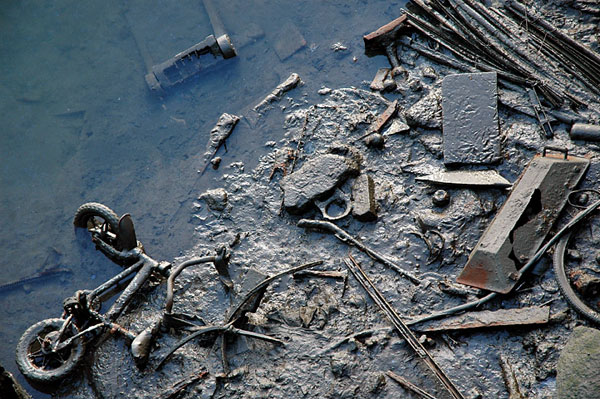
Photo by: courtesy of brainware300/Flickr
Dumping along the Gowanus Canal
The New York City Department of Environmental Protection reached its first milestone in its efforts to clean up the Gowanus Canal Monday, when it shut down for repairs the 100-year-old tunnel designed to aerate and deodorize the smelly, polluted waterway. During the tunnel’s 26-month hiatus, it will undergo a multi-million dollar upgrade. The department of environmental protection activated an alternate oxygenation system Monday as a temporary substitute for the tunnel.
The Gowanus Canal Community Development Corporation supports the tunnel upgrade and the city’s broader plan to clean up the canal. “Though the road to a clean and rejuvenated canal is long, we have never been so close,” said Gowanus Canal Community Development Corporation Executive Director Bill Appel in a press release. “I want to thank the City for following through on its commitment, and we look forward to working together to transform this area.”
The nearly 150-year-old Brooklyn canal is contaminated with sewage overflow, street run-off, and a host of industrial toxins including coal tar sludge, heavy metals, PCBs, pesticides, and volatile organic compounds, all of which can be carcinogenic.
The Department of Environmental Protection’s (DEP’s) tunnel upgrade is part of its $140 million project designed to make the Gowanus Canal clean and safe enough to be a recreational waterway, used for boating and fishing. The project was announced in October 2009 and is scheduled to end by 2013. The project operates in tandem with a remediation effort that the federal Environmental Protection Agency began orchestrating in March, after designating the Gowanus Canal a superfund site. The EPA estimates the total cost of the Gowanus Canal cleanup will be $300-500 million.
The EPA is now hunting for the corporations and entities that are responsible for the degradation of the canal to hold them fiscally accountable for its remediation. A recent investigation by one of City Limits media partner’s, NYCity NewsService, found that the city of New York – which ran multiple facilities along the banks of the Gowanus, including a Department of Sanitation Incinerator on Hamilton Avenue – received a letter from the EPA notifying it that it could be held liable for some portion of the cleanup costs.
Mayor Bloomberg opposed the EPA’s designation of the Gowanus as a superfund site, saying the designation would stigmatize surrounding residential neighborhoods, lowering their property values and threatening their economic development. Bloomberg presented an alternative cleanup proposal.
DEP’s current project is slated to upgrade the canal’s aeration tunnel in part by replacing the tunnel’s existing single pump with three pumps, a move that will increase the daily flow of oxygen rich-water into the canal by 40 percent. In addition, DEP plans to further deodorize and decontaminate the canal by reducing the amount of sewage that overflows in it and dredging the smelly sediment at its upper end.
The EPA expects to complete a report outlining its remediation plans in December 2010.








